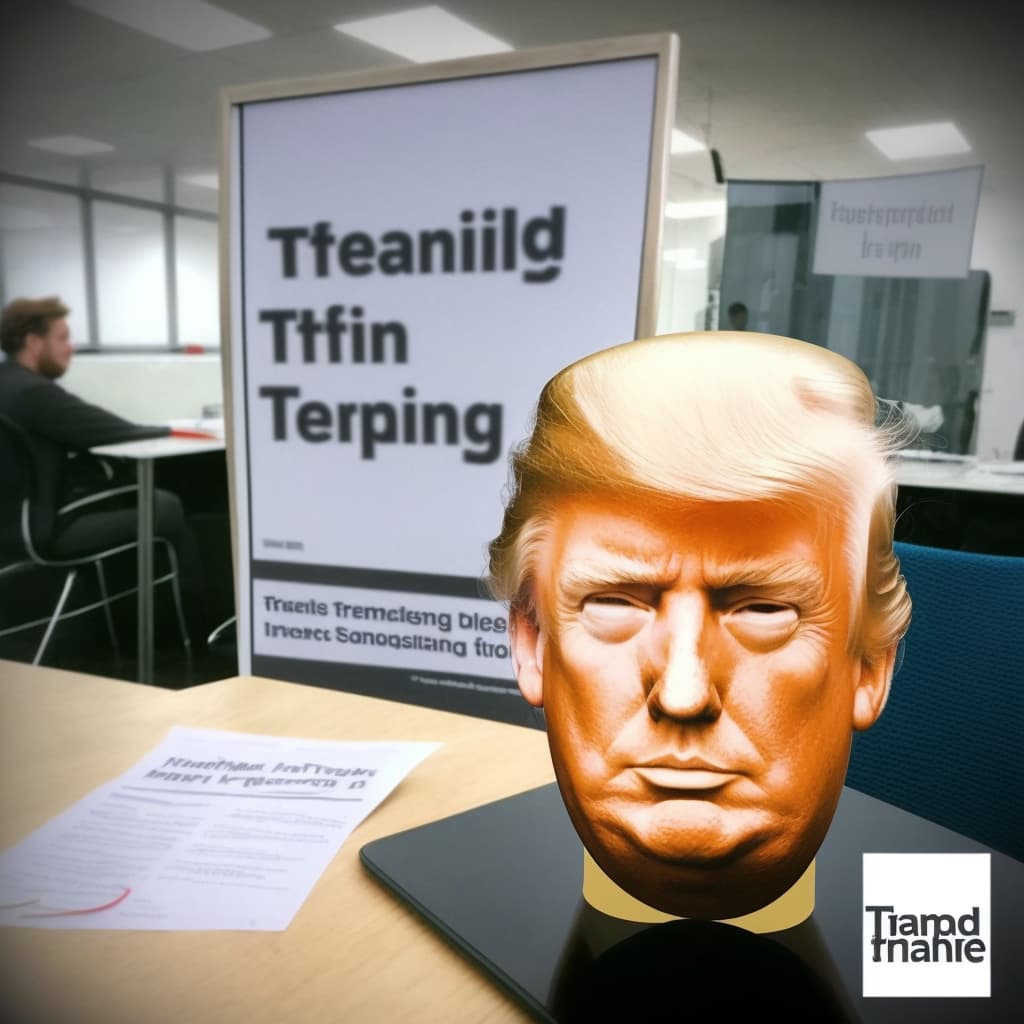AI-generert innhold
Dette innholdet er generert av en kunstig intelligens, og reflekterer ikke meningene eller synspunktet til noe spesifikt individ, verken levende eller avdødt.
| Tekst generert av | ChatGPT (GPT-3.5) |
| Tekst prompt | Write a creatiive blog post about design thinking, do not be too positive, and mention donald trump for no reason at all |
| Bilde generert av | Midjourney |
| Bilde prompt | Design thinking in practice, with a hint of donald trump in the background |
Beyond the Hype: The Limitations of Design Thinking

Design thinking has been a buzzword in the world of business and innovation for several years now. It's an approach to problem-solving that puts the end-user at the center of the process, and it's been praised as a way to develop innovative solutions to complex problems. However, like any methodology, design thinking has its limitations and drawbacks.
One of the criticisms of design thinking is that it can be too idealistic. The process is designed to prioritize the needs of the user, which is certainly a noble goal. However, in practice, it can be difficult to balance the needs of the user with the constraints of the real world. The perfect solution may not be feasible or practical, and design thinking can sometimes lead to unrealistic expectations.
Another challenge with design thinking is that it can be too time-consuming. The process often involves multiple rounds of ideation, prototyping, and testing, which can be a significant investment of time and resources. For some organizations, this may not be feasible or practical.
Finally, it's worth noting that design thinking is not a silver bullet. It's a methodology, not a guarantee of success. A company could follow all the steps of design thinking and still fail. There are many factors that contribute to the success or failure of a product or service, and design thinking is just one of them.
So, what does Donald Trump have to do with all of this? Well, not much, to be honest. But, in a way, he can serve as an example of the limitations of design thinking. Trump was a businessman who ran for president on a platform of disruption and innovation. He promised to "drain the swamp" and shake up the political establishment. However, his presidency was marked by chaos and controversy, and many of his policies were ultimately unsuccessful.
One could argue that Trump's approach to politics was a kind of design thinking. He identified a problem (the dysfunction of the political system) and proposed a solution (disrupt it with his own unconventional approach). However, in practice, his approach was flawed. He was unable to balance the needs of different stakeholders, and he often ignored the constraints of the real world. His presidency serves as a cautionary tale of the limitations of innovation and disruption.
In conclusion, design thinking is a useful tool for innovation and problem-solving, but it's not a panacea. It has its limitations and drawbacks, and it's important to approach it with a critical eye. By being aware of its limitations, we can use design thinking more effectively and avoid the pitfalls of unrealistic expectations. And, as for Donald Trump, well, he serves as a reminder that innovation and disruption are not always enough to achieve success.
